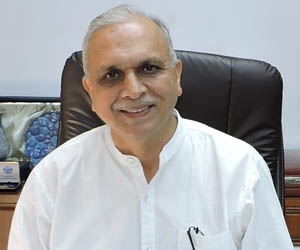The Russia-Ukraine war and the war in Gaza provide several pointers to how the nature of warfare is changing. Indian strategic thinkers need to carefully study these wars and imbibe the lessons. Indian armed forces are in the process of being reorganised into theatres. These lessons would help rethink India’s military doctrine.
Long Wars: The thinking until recent past was that wars would be short and swift. This critical assumption will have to be re-examined. Russia-Ukraine war is in its third year while the war in Gaza has been going on for the past eight months. There is no sign of them ending anytime soon. Long wars would have a significant impact on critical issues like the availability of ammunition, war wastage reserves, resource availability, logistics etc. Indian armed forces will need to think about how they should prepare themselves to fight a prolonged war.
High Rate of Casualties: In the Russia-Ukraine war, military causalities on both sides have exceeded half a million. Ukraine is running out of troops to fight. Mobilisation has become a highly sensitive issue both in Ukraine and Russia. Fresh recruits with inadequate training, are being sent to the war front. In Gaza, over 35000 civilians have died. Such a high level of causalities will puts tremendous pressure on the morale of the nation. The availability of manpower will become a serious issue. The reservist policy will have to be re-examined. The country needs to be prepared in peacetime for long-duration wars.
Multi-domain, Hybrid Wars: Warfighting has become extremely complex as the wars are being fought in multiple domains simultaneously i.e. land, air, water, cyber, space and information space. The economy is being weaponised in the war. The economic consequences of long wars can put a huge burden on the nation. Economic sanctions on Russia have disrupted global supplies of oil and grain. Fighting the hybrid war requires different approaches, orientations and skills.
New Technologies: Drones, cyber, space, Artificial Intelligence, Machine Learning, Quantum technologies, hypersonic, technologies etc are transforming the character of warfighting. In the Russia-Ukraine war, UAVs have been used extensively by both sides. The capacity to build and deploy UAVs on a real-time basis will prove to be a game changer. In the recent Iran-Israel military exchanges, Iran sent hundreds of drones and missiles against Israel. Simultaneously, Israel managed to destroy most of these mid-air. UAVs are a weapon of choice for non-state actors. The Houthis have been using these low-cost devices to harm ships and bring down Saudi’s oil production. In India too, the incidents of drones coming from across the western border have increased. Counter-drone technologies need to be developed and deployed rapidly.
Private Sector’s Involvement: The private sector has been used openly by both sides in Russia-Ukraine war. Global technology companies have taken sides and provided crucial support to Ukraine for warfighting. Elon Musk’s Starlink has provided communication support to Ukraine. Microsoft has given cybersecurity and computing support to Ukraine.
Paralysis of UNSC: The international community has proved to be helpless in stopping the war. It has failed to stop the conflicts. Let alone resolve them. The UNSC is paralysed. It could not avert the humanitarian crisis in Gaza. The Russia-Ukraine war is turning out to be a proxy war between Russia and NATO. The danger of these conflicts expanding to other areas is at an all-time high.
Uncertain Nuclear Environment: The wars are being fought in the backdrop of the rapid erosion of international arms control agreements. Anti-Ballistic Missile (ABM) treaty, Intermediate-Range Nuclear Force (INF) and New START Treaties are dysfunctional. Conference on Disarmament is blocked. The danger of nuclear proliferation and an arms race in outer space have increased manifolds. During the Russia-Ukraine conflict, leaders have made statements on several occasions indicating a propensity to use nuclear weapons in war. Nuclear deterrence, which worked well during the Cold War, is now at a breaking point. The risk of the use of nuclear weapons in war fighting is significant.
Lessons
Learning from the ongoing wars, India would need to seriously examine the following aspects closely:
- Revision of military doctrines: Are our military doctrines adequate? There is an urgent need for military planners to closely examine the prevalent military doctrines and their effectiveness in meeting the current security challenges. The role and relevance of conventional platforms vis-a-vis new, nimble devices like UAVs, hypersonic missiles, satellites, cyber weapons and directed energy weapons need to be re-examined.
- The availability of financial and manpower resources: What is the optimum level of defence expenditure in view of the new threats and technologies? How should these resources be allocated? This needs an urgent examination.
- Recruitment, education, skills and training: How much and what kind of manpower will be required for modern warfighting? Indian armed forces need to keep a sharp focus on human resource issues like recruitment, education, skills and training in light of the changing nature of warfare. We need to have sufficient manpower
- Technologies: How to become Atmanirbhar in new technologies (i.e. UAVs, cyber, space, quantum, AI/ML etc), at the earliest possible? What kind of international cooperation is needed to ensure that India benefits from new technologies? How should new technologies be absorbed in the armed forces rapidly? How should these be procured? Such questions need to be addressed urgently.
- Logistics and infrastructure: What is the role of physical and digital infrastructure in contemporary war fighting. In Russia-Ukraine war, infrastructure has been attacked mindlessly on both sides. India has made good progress in improving the logistics and infrastructure, particularly on the borders. Still, a lot more needs to be done. A medium to long-term plan to build infrastructure for the armed forces needs to be implemented. India also needs to explore the possibility of cooperation with other countries to share logistics and infrastructure. But this will have major security implications. There ought to be clarity on the kind of defence and security cooperation India can have with other countries.
- The production and availability of ammunition: How to ensure adequate communication in a long duration war. It is also expensive and not easy to procure. In the ongoing war, a shortage of ammunition has emerged as a major constraint, particularly for the Ukrainians. NATO countries have been supplying ammunition to Ukraine but even they are experiencing shortages. This is a critical aspect the Indian armed forces will have to look into urgently.
- Air Defence: How to defend air space against swarms of drones, rockets? Liberal use of rockets, missiles and drones has brought before the importance of Air Defence against UAVs and missiles. The Air Defence system needs to incorporate these realities.
- Defence industrial complex: Do we have enough defence production in the country? India has made progress in increasing indigenous defence production. However, reliance on the import of weapons remains high. An indigenous defence industrial complex is a must for Indian armed forces to fight long-duration wars. There are still several issues that need to be resolved: encouraging the private sector to produce high-quality defence equipment for the armed forces, the quality of indigenous defence production, trials, R&D, long-term support to the start-ups etc. These practical issues need to be resolved urgently.
- All of the nation approach: Do we, as a nation and society, are cognisant of the uncertain environment? Military preparedness is done during peacetime. The country needs to be sensitised about the unstable international environment and the impact it can have on India. India cannot remain isolated from the ongoing conflicts if they spread to other areas.
- Military diplomacy: There is growing instability in Indo-Pacific and West Asia, the two regions that are critical for India’s growth and prosperity. Our immediate neighbourhood is also unstable. The continental dimension of India’s security is as important as the maritime dimension. India has joined the Quad in the Indo-Pacific and SCO, I2U2 IMEC, INSTC etc in the east. India is also conducting high-level military exercises with several countries. India’s military diplomacy has many dimensions, which need to be examined carefully. Our minimum deterrent, is it truly credible?
- Nuclear doctrine: India needs to watch carefully the loosening of the nuclear arms control regime. Nuclear-armed countries particularly China and Pakistan are modernising their nuclear and missile arsenal rapidly. We need to constantly examine our nuclear doctrine in the context of these developments.
Conclusion
Indian military planners have their task cut out. The lessons from Russia-Ukraine and the Gaza war are important even as we focus on our unique set of challenges. As Indian armed forces take steps towards theatrisation, they need to consider how the changes in warfighting should be incorporated into their thinking. They will have to fully comprehend the evolving nature of threats, and the motivation and capability of the adversary and do their own SWOT analysis. The Russia-Ukraine war, the Gaza war and probable future conflicts should (i.e. Taiwan) alert us to the need for new thinking. A comprehensive national security strategy document that takes into account the evolving threat scenario and the changing nature of warfare should be prepared urgently.
(The paper is the author’s individual scholastic articulation. The author certifies that the article/paper is original in content, unpublished and it has not been submitted for publication/web upload elsewhere, and that the facts and figures quoted are duly referenced, as needed, and are believed to be correct). (The paper does not necessarily represent the organisational stance... More >>
Image Source: https://aniportalimages.s3.amazonaws.com/media/details/ANI-20240417025501.png











Post new comment